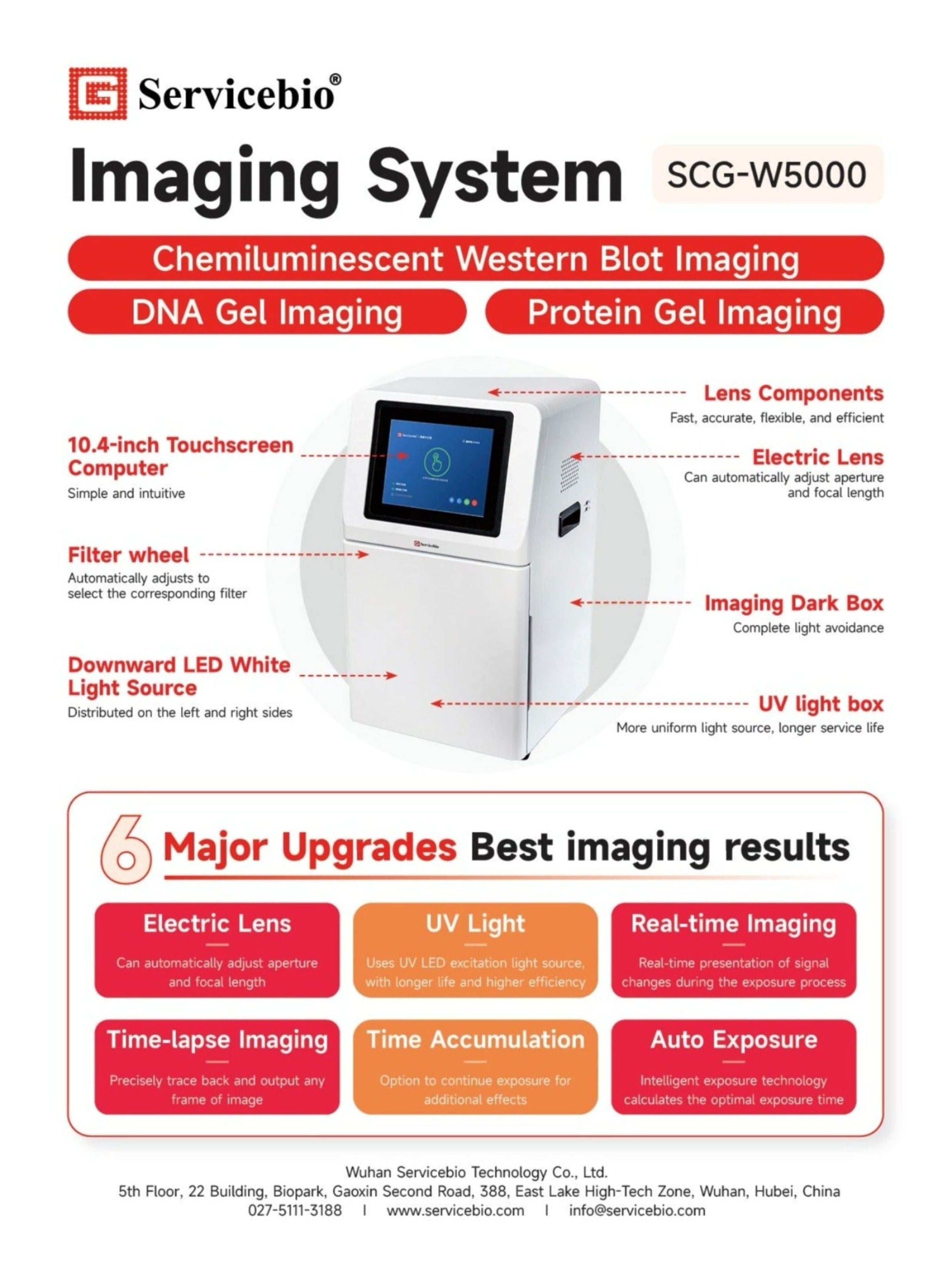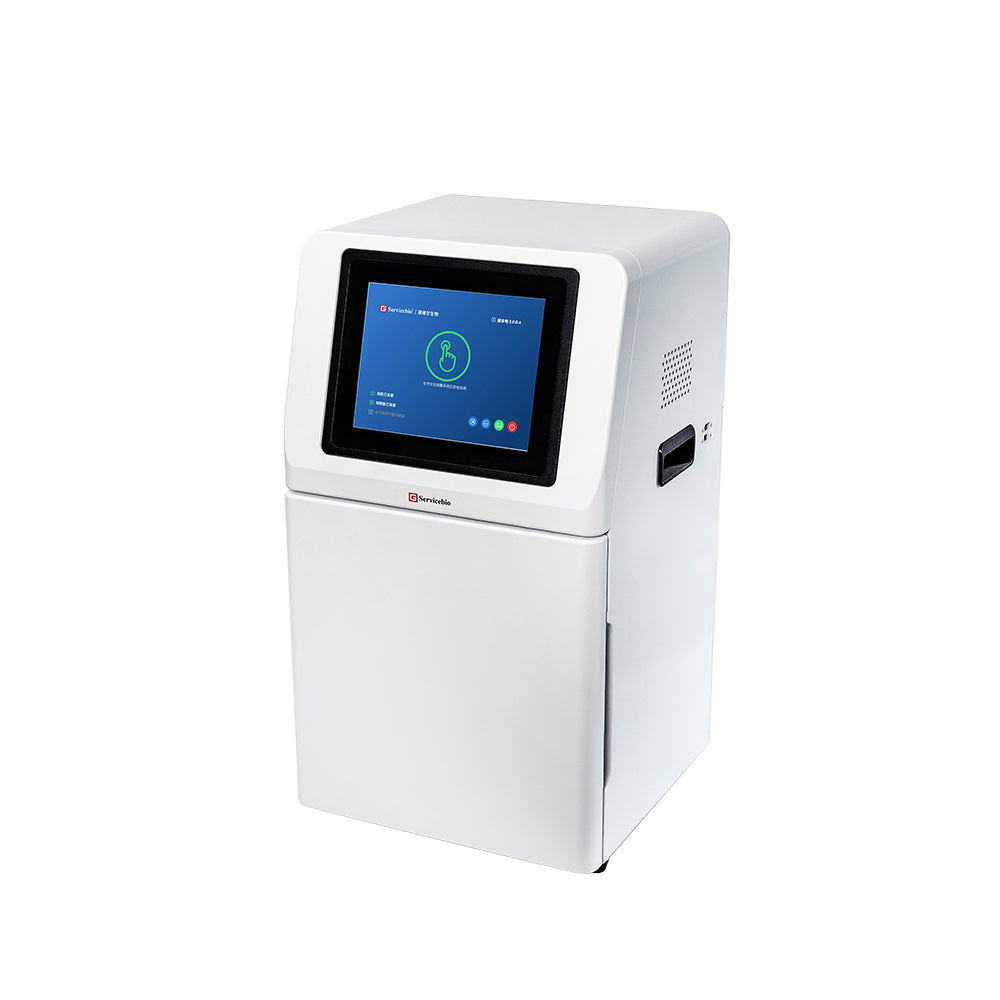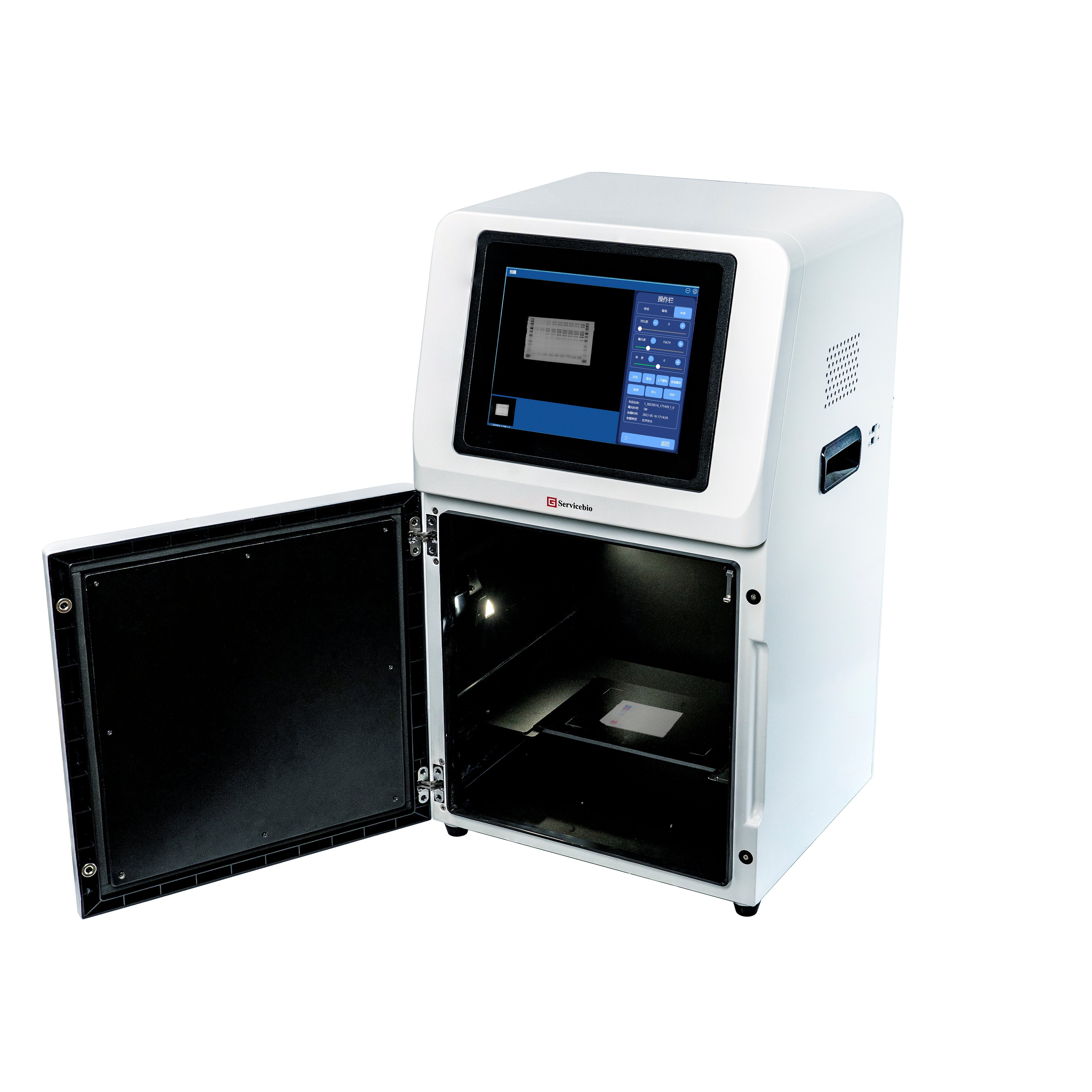Description
NEW SCG-W5000 Integrated imaging system for Chemiluminescent Western Blot Imaging, DNA and protein Gel Imaging.
Easy to install and use.
ECL Reagent is available.
W5000 has multiple trays for DNA/protein gels and chemiluminescent western blots.
How to complete exposure with a weak western blot signal in one go?
How to complete exposure at one time when the signals of multiple Western blot films are strong and weak?
After completing the Western blot, the results are strong or weak. What should I do if I am not satisfied?
SCG-W5000 perfectly solves the Western blot exposure problem!
The following features of our imaging system are unique, which other manufacturers do not have.
- Real-time imaging (Showing the signal changes in the exposure process in real-time)
- Time imaging (Accurately trace back and output any frame of image)
- Time accumulation (Continue exposure to obtain additional effects)
Working Video:
https://www.youtube.com/watch?v=ZqiDPAUTgN8
Installation Video:
https://www.youtube.com/watch?v=MZAgbmqfEvs
Operation Guide:
https://www.youtube.com/watch?v=KnvNS9JBDXM

Chemiluminescence Imaging System - Summary
The Chemiluminescence Imaging System, with the Cat. No. SCG-W5000, is an imaging device that utilizes chemiluminescence technology. It is equipped with a high-sensitivity cooled camera with 9 million pixels. This system enables fast, accurate, and high-throughput detection and imaging of samples, making it widely used in fields such as life sciences, medicine, and environmental protection.
Here are some key features and technical specifications of the Chemiluminescence Imaging System:
Features:
- Real-time Imaging: The system presents changes in sample signals during the exposure process in real-time, capturing every detail of the shot. Overexposed areas are indicated for samples that are overexposed.
- Time Imaging: After the exposure is completed, every frame image within the exposure time can be generated. Users can select any frame image within that exposure time as the final output.
- Time Accumulation: For samples with insufficient exposure, users can choose to continue the exposure after the exposure ends, allowing the sample to obtain additional exposure effects based on the exposure time already accumulated.
- Automatic Exposure: The system utilizes intelligent exposure technology to quickly determine the optimal exposure time. With the functions of time imaging and time accumulation, users can obtain the best image results with just one operation.
Technical Specifications:
- Dimensions: 400mm×371mm×700mm
- Camera:
- Pixel Resolution: 9 million pixels
- Resolution: 3000×3000
- Pixel Size: 3.76μm×3.76μm
- Target Size: 1 "(11.28mm×11.28mm)
- Full Well Capacity: 16.5ke-(HCG), 50.5ke-(LCG)
- Sensitivity: Not specified
- Readout Noise: 1.24e-(HCG), 3.22e-(LCG)
- Dark Current: 0.0003e-/s/pixel@-15℃
- Signal-to-Noise Ratio: 42.2dB(HCG), 47dB(LCG)
- Exposure Time: 0.1ms~1h
- Binning Mode: 1×1, 2×2, 3×3
- Grayscale: 16-bit (65536 levels)
- Cooling: Relative to Ambient Temperature-40℃
- Camera Type: Black and White Camera
- Lens:
- Aperture: F0.95-F16
- Focal Length: 17mm
- Type: Fixed Focus Lens
- Light Source: Bright Field Light Source (Downward-facing LED white light source, symmetrically distributed on both sides)
- Dark Box:
- Light Isolation: Fully light-sealed, isolates environmental light.
- Door Control: Door control sensor can control the on/off of the bright field light source.
- Field of View: Effective field of view is 136mm*136mm (expandable to 200mm×200mm if needed).
- Software Functions: Real-time Imaging, Overexposed areas can be displayed, Time Imaging, Auto Exposure
Please note the precautions mentioned in the document, such as avoiding touching or scratching the internal lenses of the dark box, closing the instrument's flip door to prevent external light from entering the dark box, and ensuring electrical safety.
The operating procedures for the Chemiluminescence Imaging System are as follows:
- Power On
- Sample Loading
- Launching the Chemiluminescence Imaging Software
- Software Self-Check
- Preview and Capture Pages
- Capturing Process
- Export Page



